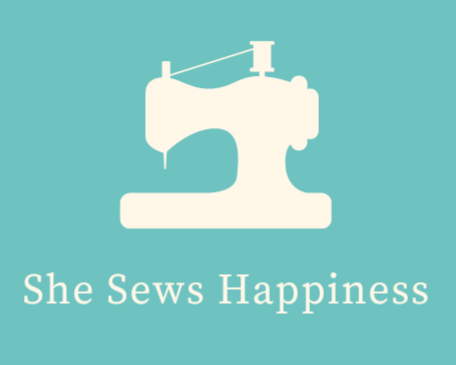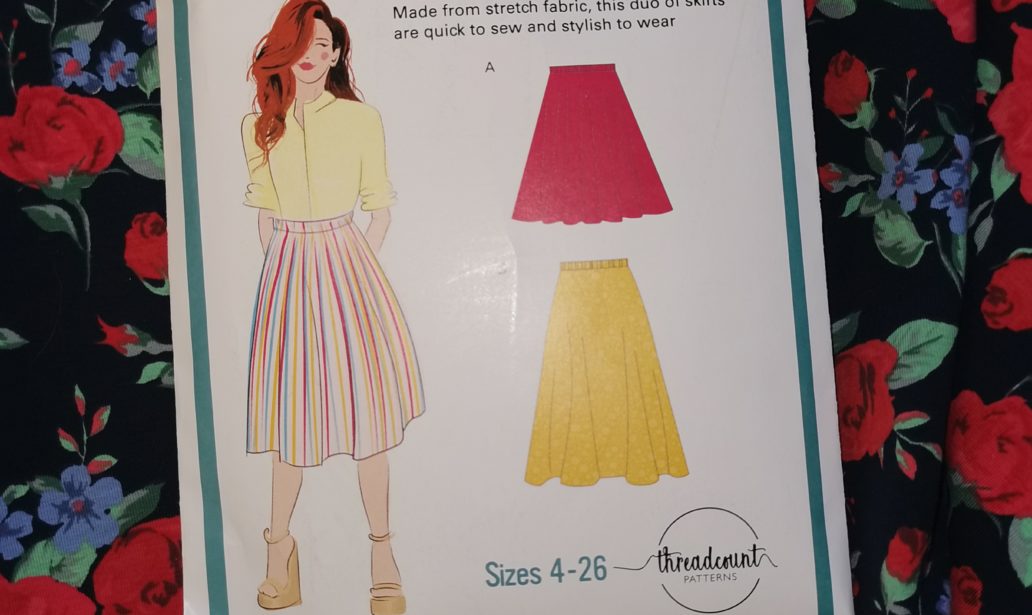Sewing with jersey fabrics is not as difficult as you might think. I blogged about my first experience with jersey knit fabric a few weeks ago and was pleasantly surprised at how easy the process was. All you need is the right stitch and needle and the right choice of fabric for your garment.
There are various types of knit fabrics available. These are the main types that you will come across;
Cotton jersey
- Usually a single knitted jersey with a percentage of 90-95% cotton and 5-10% elastane. This fabric is perfect for tops, leggings, etc. It is mainly light to medium weight.
Viscose jersey
- A light to medium weight fabric which is usually made of about 92-95% viscose and 5-8% elastane. It drapes better than cotton jerseys and is a popular choice for items such as dresses and tunics.
Interlock jersey
- This is heavier than single jersey as two layers of jersey are ‘knitted’ together – you’ll spot it easily because the front and back will look the same. It can either be made of cotton or viscose and is suitable for dresses, tops, skirts, etc.
Polyester jersey
- Polyester jersey is synthetic so it doesn’t have that lovely natural feel to it that cotton jerseys have. The percentage of polyester and elastane is about the same as other jerseys but it tends to be more wrinkle and stain resistant and is used predominantly for ladies wear such as tops, dresses, etc.
Ponte di Roma
- This is a stable double knit fabric. It is less stretchy than cotton and viscose jerseys, which makes it very easy to work with; it’s particularly good for making tops and cardigans.
Most jersey fabrics have a 4-way stretch; i.e. they stretch crosswise and lengthwise. But there are also some knit fabrics, which are usually heavier, which only have a 2-way stretch so it’s always best to check the fabric recommendation on your pattern before choosing your material to make sure you are using the correct fabric.
TOP TIP
Always pre-wash your fabric – especially jersey. Some of them shrink a lot in the wash so you’ll save yourself a lot of disappointment if you shrink it before you cut it or, chances are, you’ll end up with an item that doesn’t fit too well after it has been washed.
Cutting your fabric
The most important thing to remember when you are cutting your jersey fabrics is not to stretch them. Always make sure they are lying flat on the cutting mat – if you’re cutting on a table, don’t have the fabric hanging over the side of the table as the weight will be stretching it – for this reason I often take my cutting mat to the floor. You can either pin your pattern down and cut it out with scissors or use paper weights and a rotary cutter; I recommend the latter as it’s much more effortless. In fact, I use a rotary cutter for everything. It speeds up the pattern piece preparation.
Sewing with jersey fabric
Knit fabrics have to be sewn with a special needle, called a ballpoint or stretch needle. A ballpoint needle has a round tip and pushes the fibres away while sewing rather than piercing and tearing them. The size of the needle depends on the type of jersey you are using; if you are sewing with light or medium weight knits you’ll need a size 75/11 or 80/12 whereas heavier fabrics will need a 90/14 needle.
You do not need any special thread for sewing with jersey – normal polyester thread works perfectly well on knit fabrics.
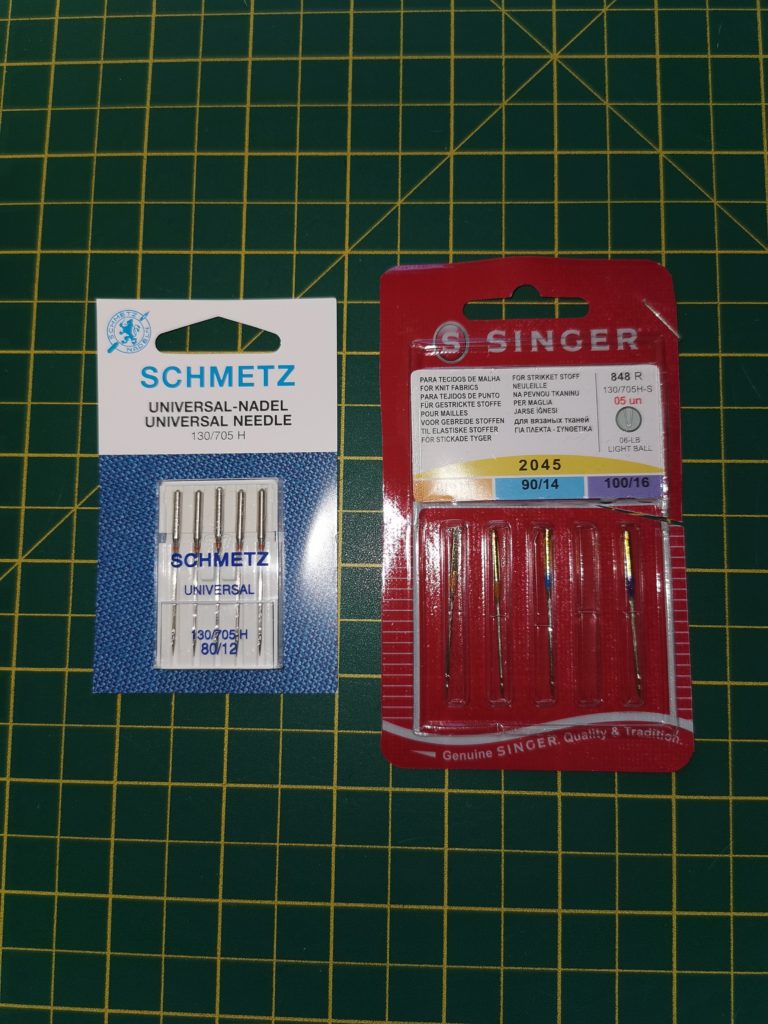
For me, the best stitch for sewing jersey fabrics is the stretch stitch – your machine will have a setting for this. You can also use a narrow and short zigzag (which is good for top stitching stretch fabrics).
If you have an overlocker, working with stretch fabrics is going to make your investment worthwhile – it sews and finishes your seam at the same time. However, as most jersey fabrics don’t fray you won’t usually have to finish your seams at all.
Threadcount Patterns – Duo of Skirts
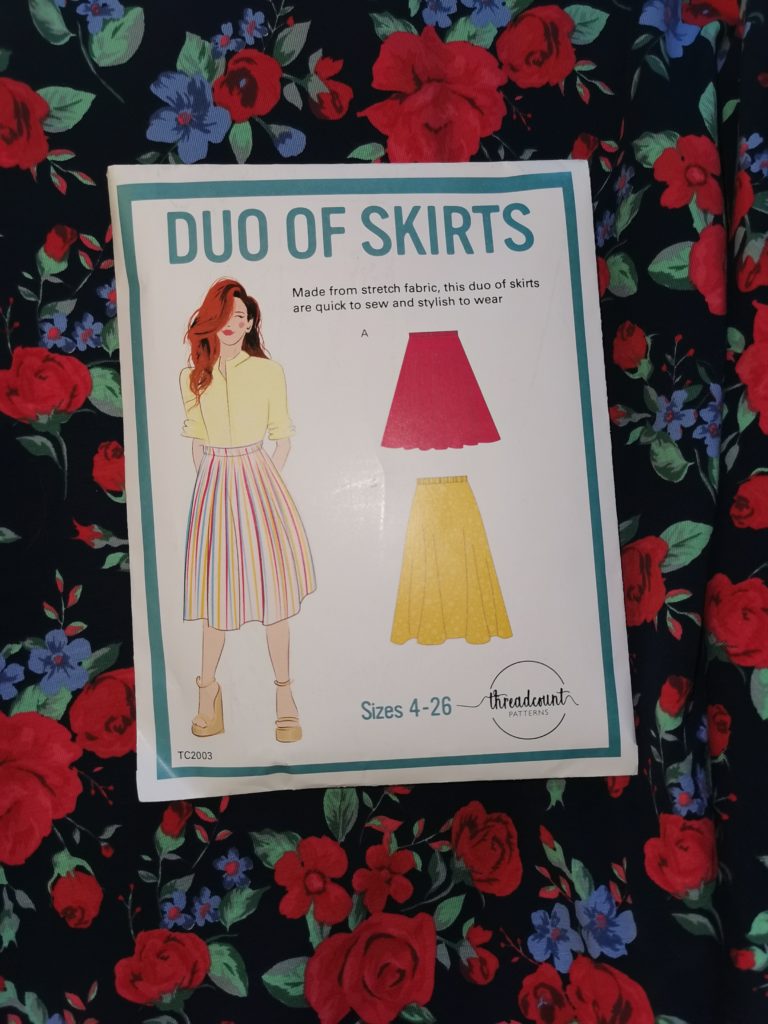
Having enjoyed my first experience of sewing with jersey so much, I decided to take an afternoon to sew up this Threadcount Patterns skirt that came in the last edition of Love Sewing (Issue 79) – after all, I find myself with a lot more sewing time being in social isolation.
I fell in love with this rose print cotton jersey as soon as I saw it, currently in stock at Oh Sew. It is medium weight (95% cotton and 5% elastane) and so beautifully soft. The print is also reminiscent of more vintage styles – I actually suspect I’ll be ordering up some more to make a dress before the week is out.
The pattern itself is a total breeze and if you are new to sewing with jersey you’ll find this a perfect introduction. The pattern comes in 2 styles; view A is a shorter, more flared style (as a 5ft2″ size 14, this skater style suits me) while view B has a longer hem length. The skirt duo feature elasticated waistbands, making them super comfy – this is not a difficult technique to master so don’t be worried if you haven’t used elastic before.
You have two skirt pieces that you join at the side seams, followed by attaching the waistband and inserting a piece of elastic.
The skirt is then finished with a narrow hem; this is a technique that’s worth perfecting as it is used for most curves, including circle skirt hems, necklines and armholes. It works very well both on woven (non stretchy) and stretchy fabrics. I didn’t follow the instructions exactly for this step but the end product is the same.
Basically, you sew 1/4″ from the lower edge of the skirt using long machine stitches.
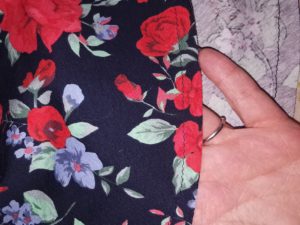
You then fold the hem about 1mm above the stitched line and press.
Take your fabric back to the machine and stitch around 5mm (1/8″) above the first seam.
With small scissors trim all around the seam allowance – this will require patience – about 2mm above the second seam.
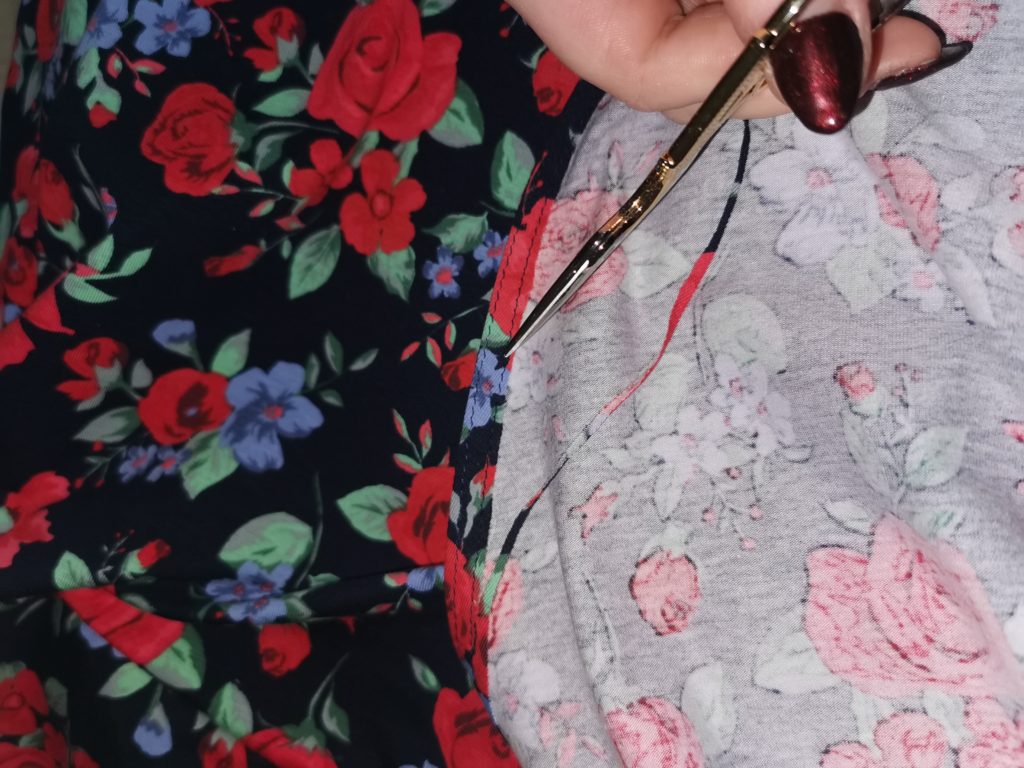
Fold the hem a couple of millimetres above the second stitching line and press.
Take your fabric back to the machine and top stitch a seam about 5mm (1/8″) away from the folded edge of the hem.
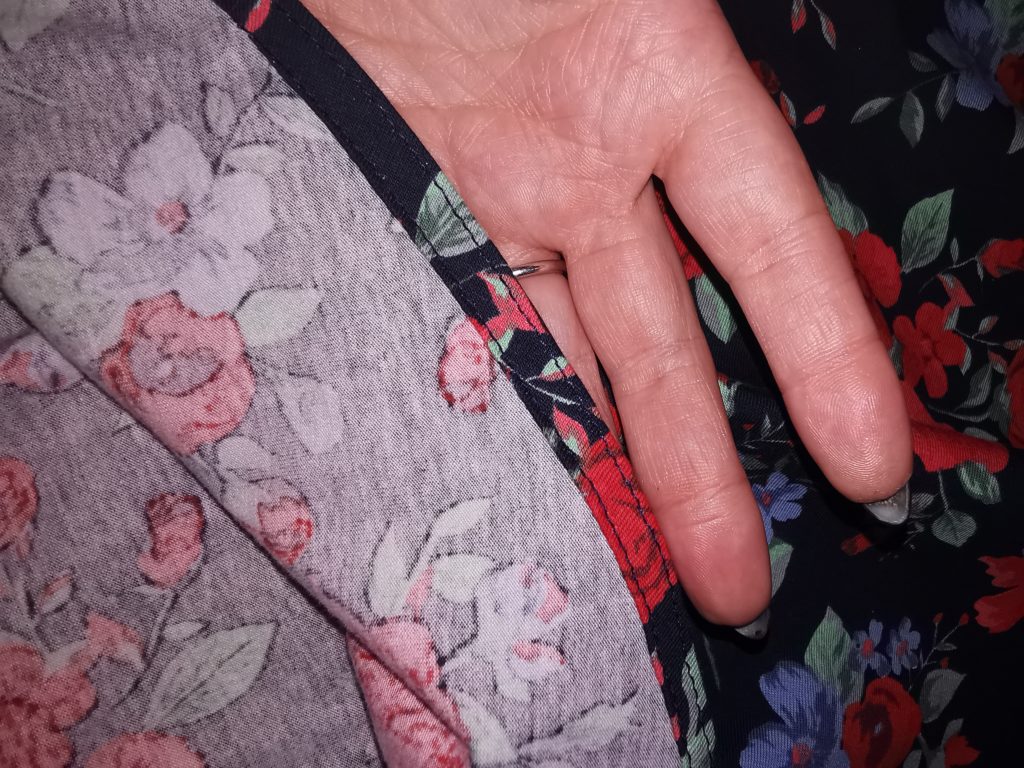
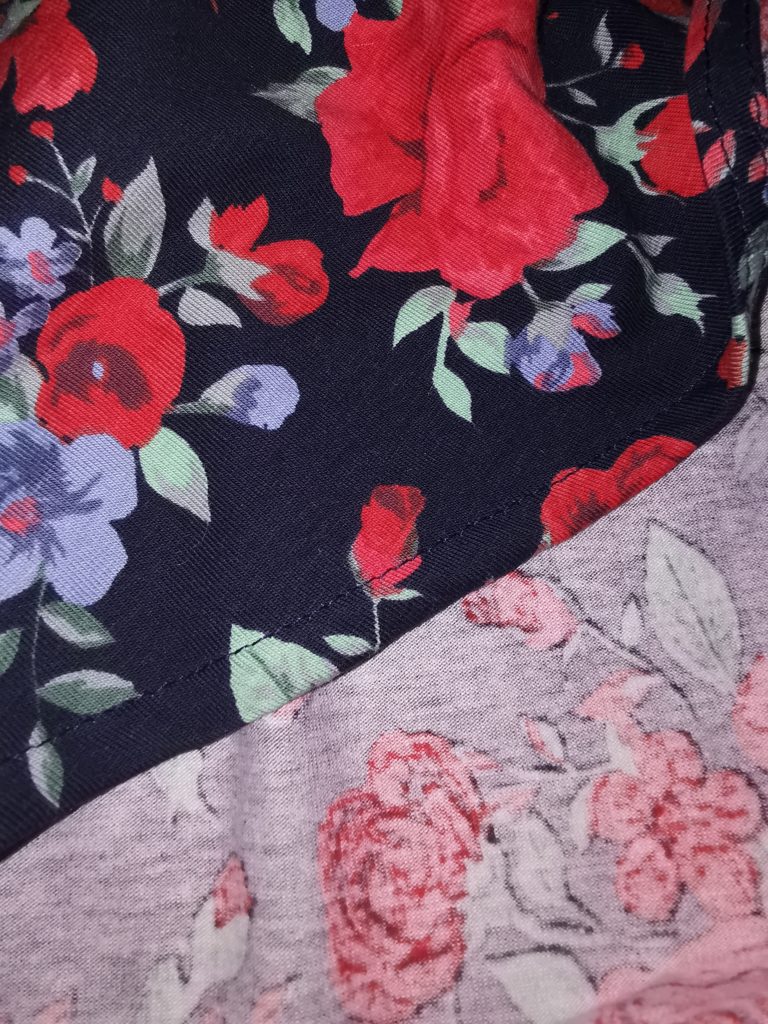
Give it another press and you’re done!
